Although impressive enough for guests, this Wrapped Salmon in Phyllo is very simple to make. Finish with a zesty lemon horseradish cream sauce to perfectly round it out. In about 30 minutes and with just a handful of ingredients, create a special and unique fish dish with great texture and flavor.
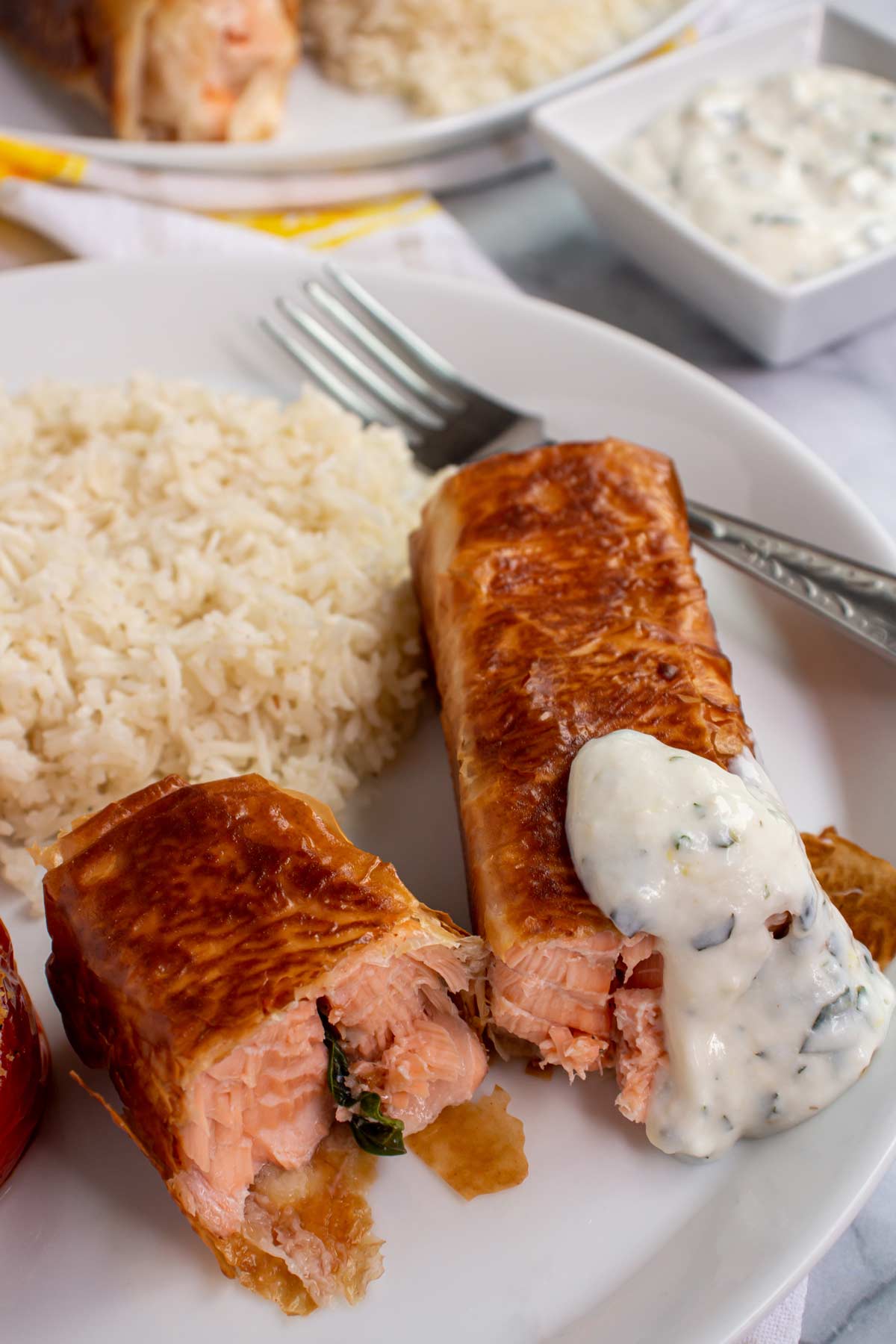
(This recipe was originally published in February 2011, but was updated with new photos and content in 2021).
While countless salmon recipes exist, this recipe adapted from award-winning chef and seafood guru Eric Ripert is special and surprisingly simple.
A crispy golden crust of phyllo encases tender fillets of salmon. Sandwiching fresh basil leaves between two fillets of salmon is a great way to add color, flavor, and a nice surprise when diners cut their wrapped salmon in phyllo.
This multi-textured salmon recipe is served with an easy lemon horseradish cream sauce. It's a bit zesty and spicy, fresh and lemony, and smooth and creamy all at the same time. It's so good, I would recommend making this sauce for other fish dishes as well.
Ingredient notes
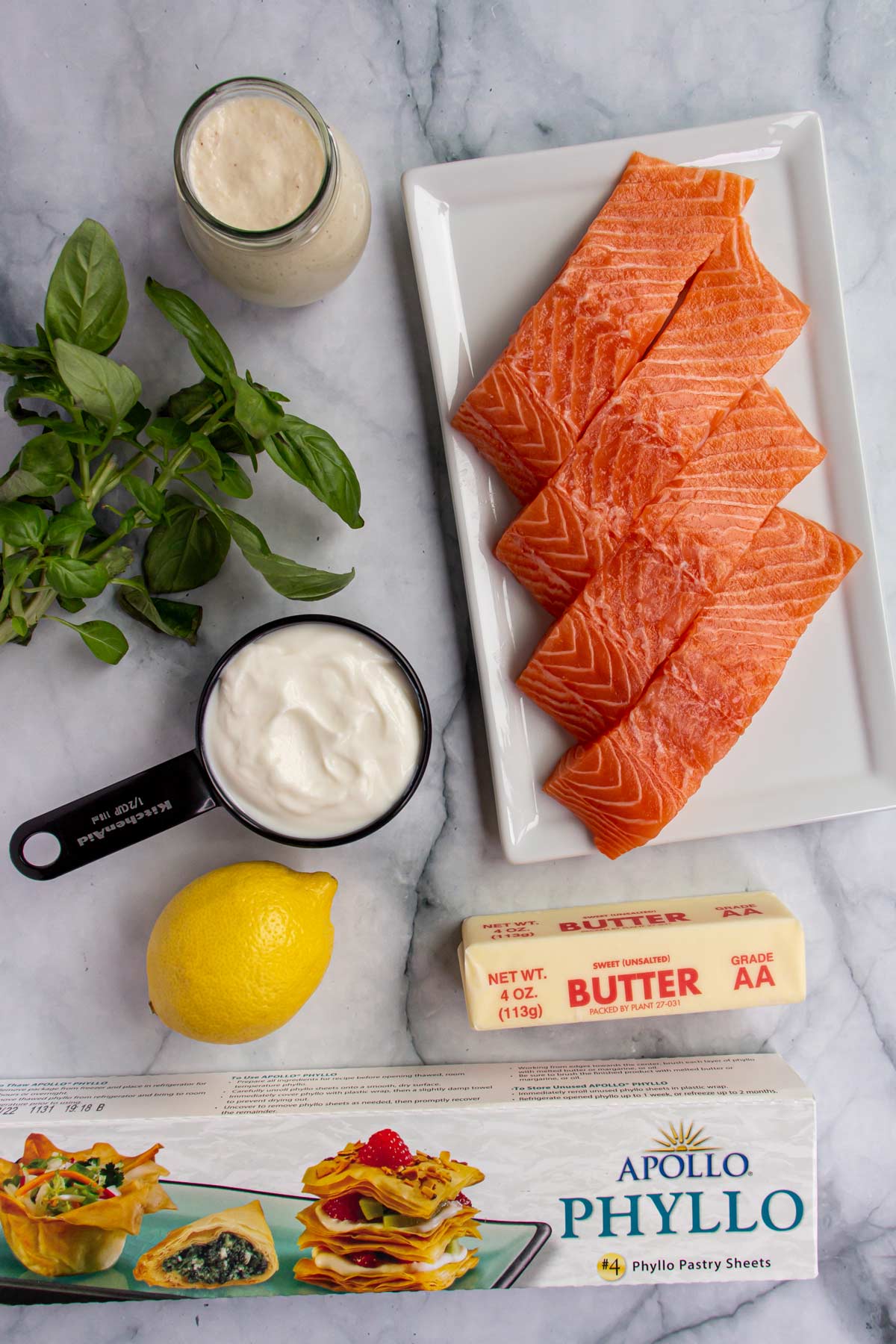
- Salmon: Use skinless, boneless salmon fillets for this wrapped salmon recipe. I usually purchase a 1 ½ pound skinless boneless side of salmon and cut into 8 equal pieces (each weighing about 3 ounces). If your salmon fillets are much larger, your sandwiched bundles will be larger and may take a bit longer to cook through.
- Basil: Use fresh basil leaves for this recipe. If you don't have fresh basil, you could also use other fresh herbs you like that complement fish, such as tarragon or dill. Layer them in between the salmon fillets and use them in the sauce too if you'd like.
- Phyllo Dough: Phyllo dough, sometimes spelled filo dough, can be a bit temperamental to work with, but it's not nearly as scary as some folks think. Even if yours rips a bit, once you wrap up the fish you can hardly tell. You'll only need 4 sheets of phyllo for this recipe. Use the remaining sheets to make some Armenian baklava (paklava), sari burma (rolled baklava), or spanakopita. Any thickness of phyllo should work for this wrapped salmon recipe. To learn more about phyllo dough, check out my paklava post.
- Horseradish: Horseradish is actually a root. You'll find it most commonly prepared in jars or bottles rather than fresh. Prepared horseradish is quite pungent, and is made with grated horseradish, vinegar, and salt. You'll also find horseradish sauce (sometimes even labeled "creamy") in supermarkets. It's a bit milder and contains additional ingredients to make it more of a sauce that you can enjoy on its own. Either can work for the lemon horseradish cream sauce (with different but delicious results) so use whichever is available.
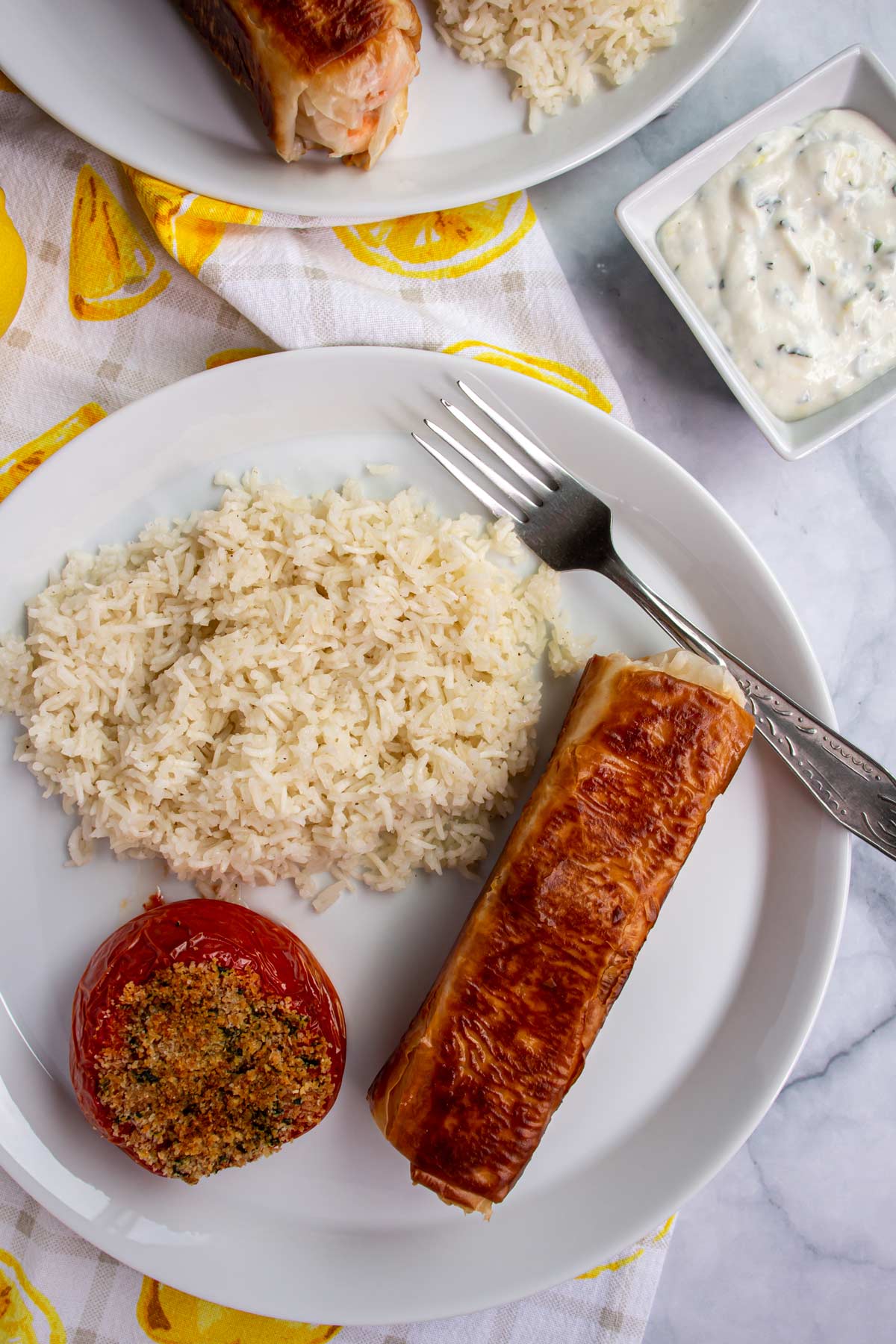
How to make it
Season the salmon fillets on all sides with salt and pepper. Lay basil leaves on top of 4 of the salmon fillets, and then place another salmon fillet on top of each basil-covered one to make a sandwich (flip-flop the fillets so the skinny side of one is against the fat side of the other fillet to create a more even thickness for cooking).
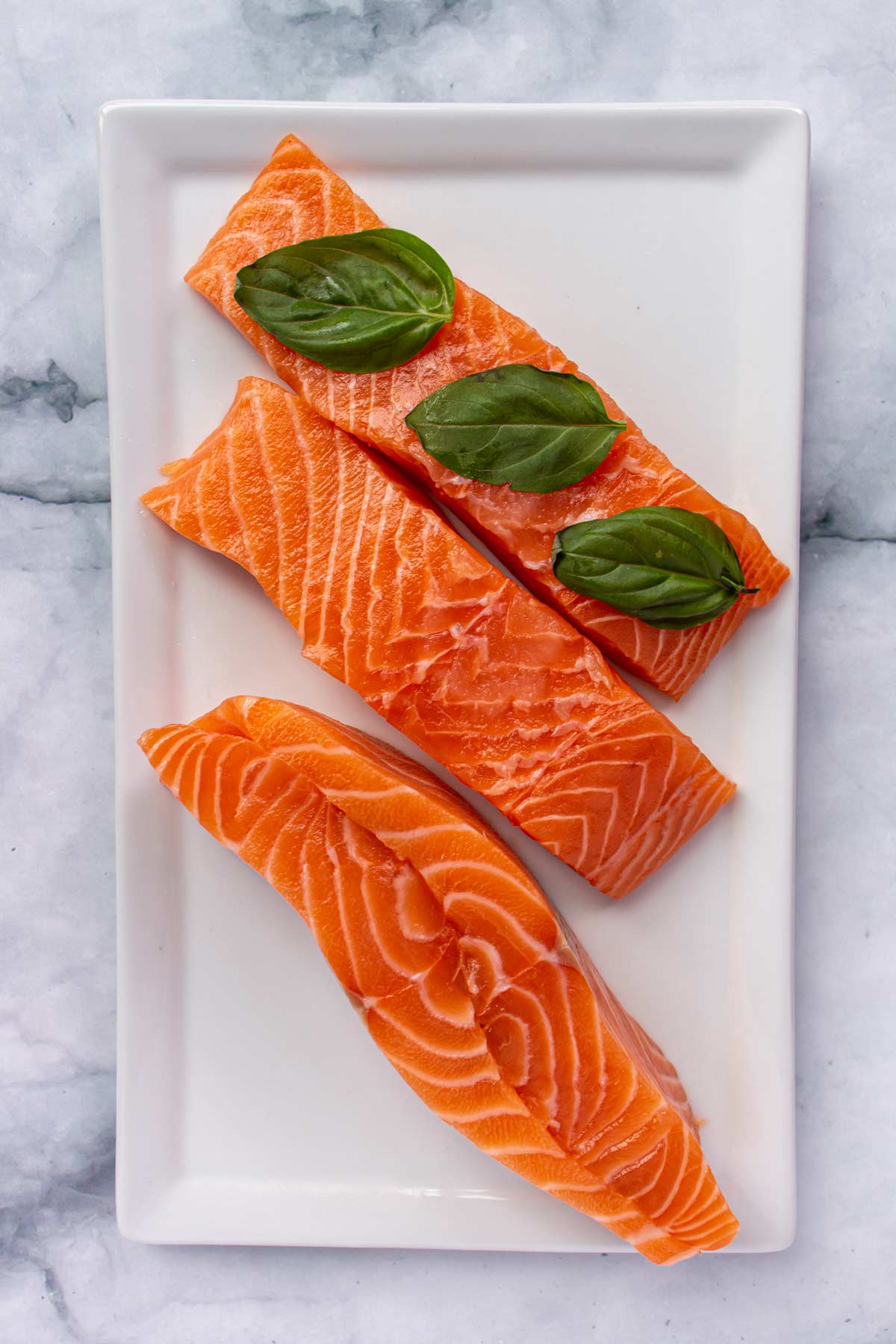
Brush the top of 1 phyllo sheet with melted butter, fold the sheet in half (like a book), then brush the top with more butter. Place 1 salmon-basil fillet sandwich on 1 end of the phyllo dough.
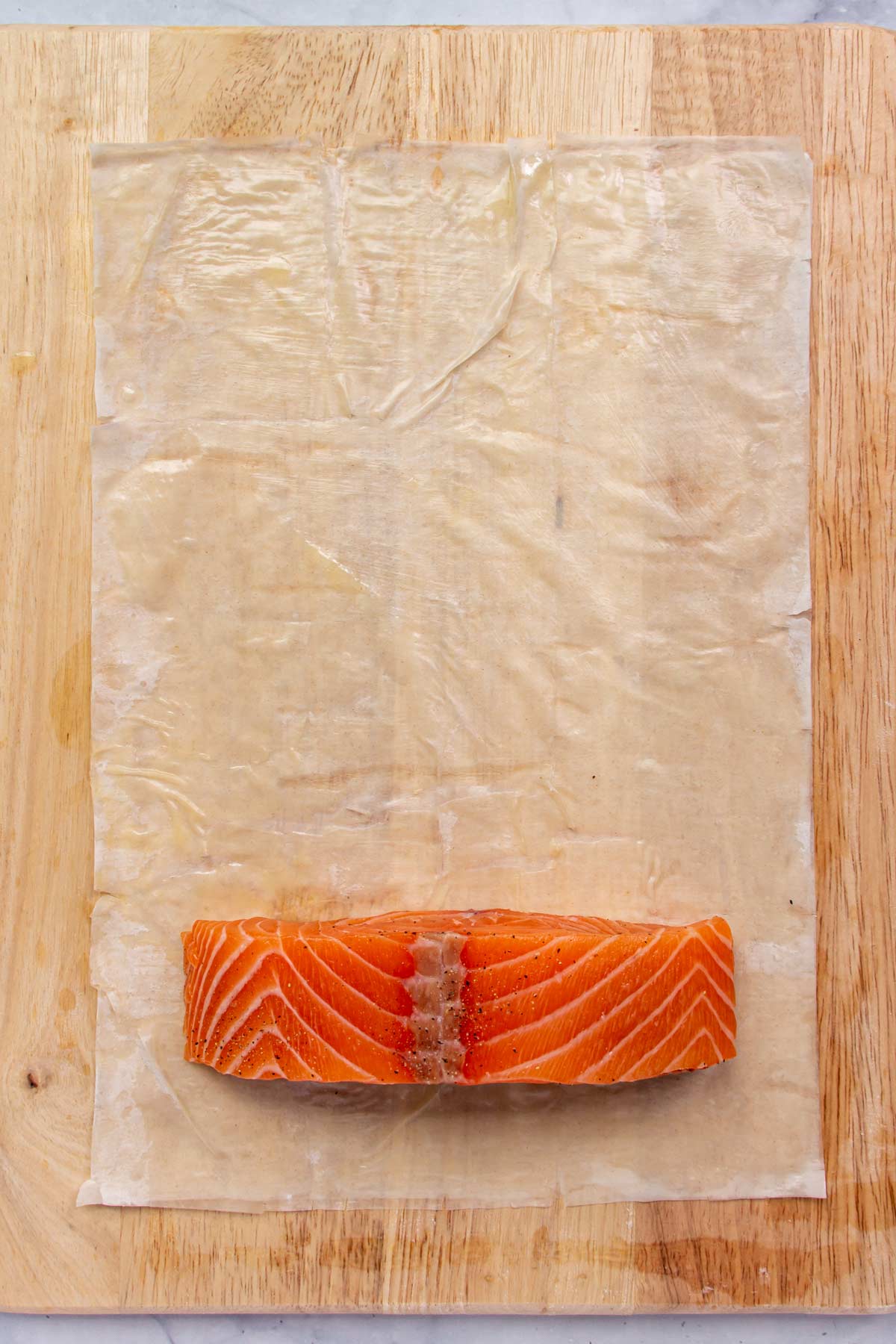
Wrap neatly, folding the sides in like a burrito. Repeat with the remaining phyllo, butter, and salmon-basil fillets. Cover with a clean kitchen towel until ready to cook (to keep them from drying out).
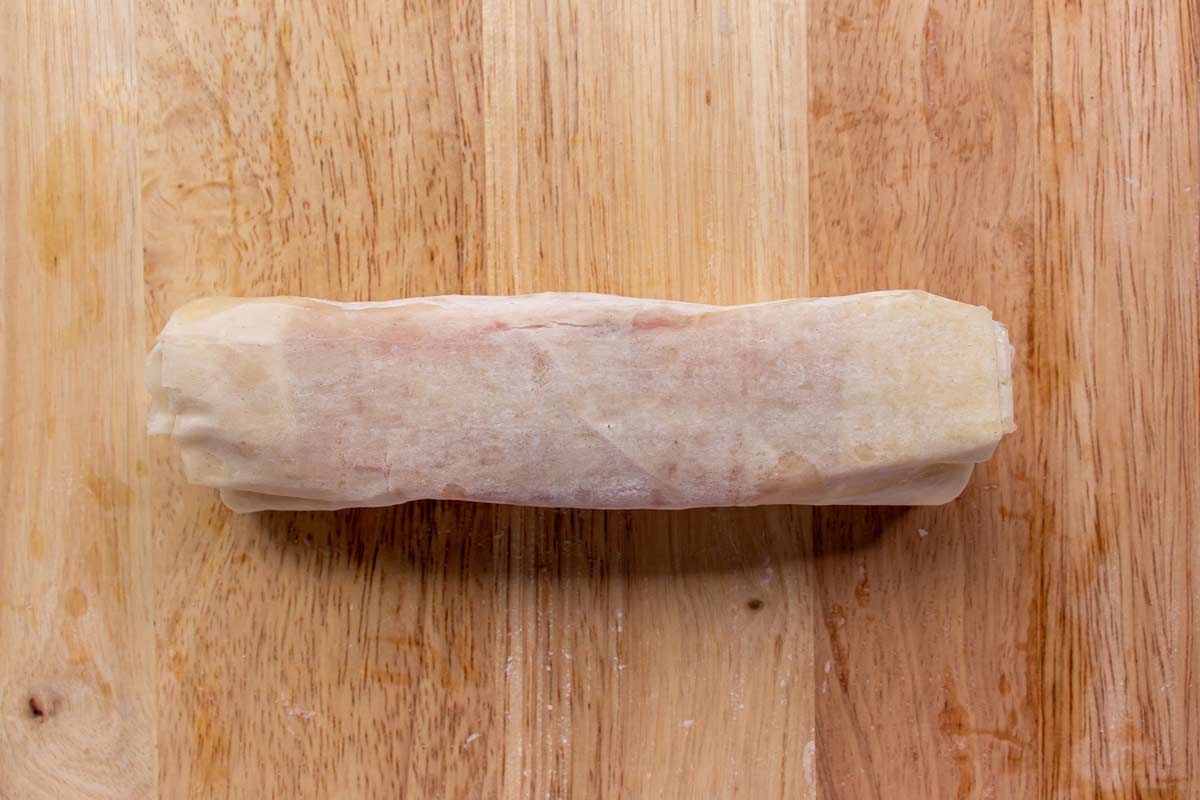
Meanwhile, make the sauce by combining the sour cream, horseradish, lemon zest and juice in a bowl. Season the horseradish cream with salt and pepper and stir in the basil or chives.
Add oil to a large nonstick skillet or sauté pan and heat the oil over medium heat. Add the phyllo-wrapped salmon fillets and cook for about 3 to 4 minutes on the first side, then using silicone-tipped tongs carefully flip and cook for about 2 minutes on each of the remaining 3 sides (the first side will usually take the longest to brown).
The phyllo should be golden brown and an instant read thermometer inserted into the thickest part of the salmon should read 145°F. Serve the salmon fillets immediately with the horseradish cream.
Please scroll to the bottom of the post for the full recipe (in a printable recipe card) including ingredient amounts and detailed instructions.
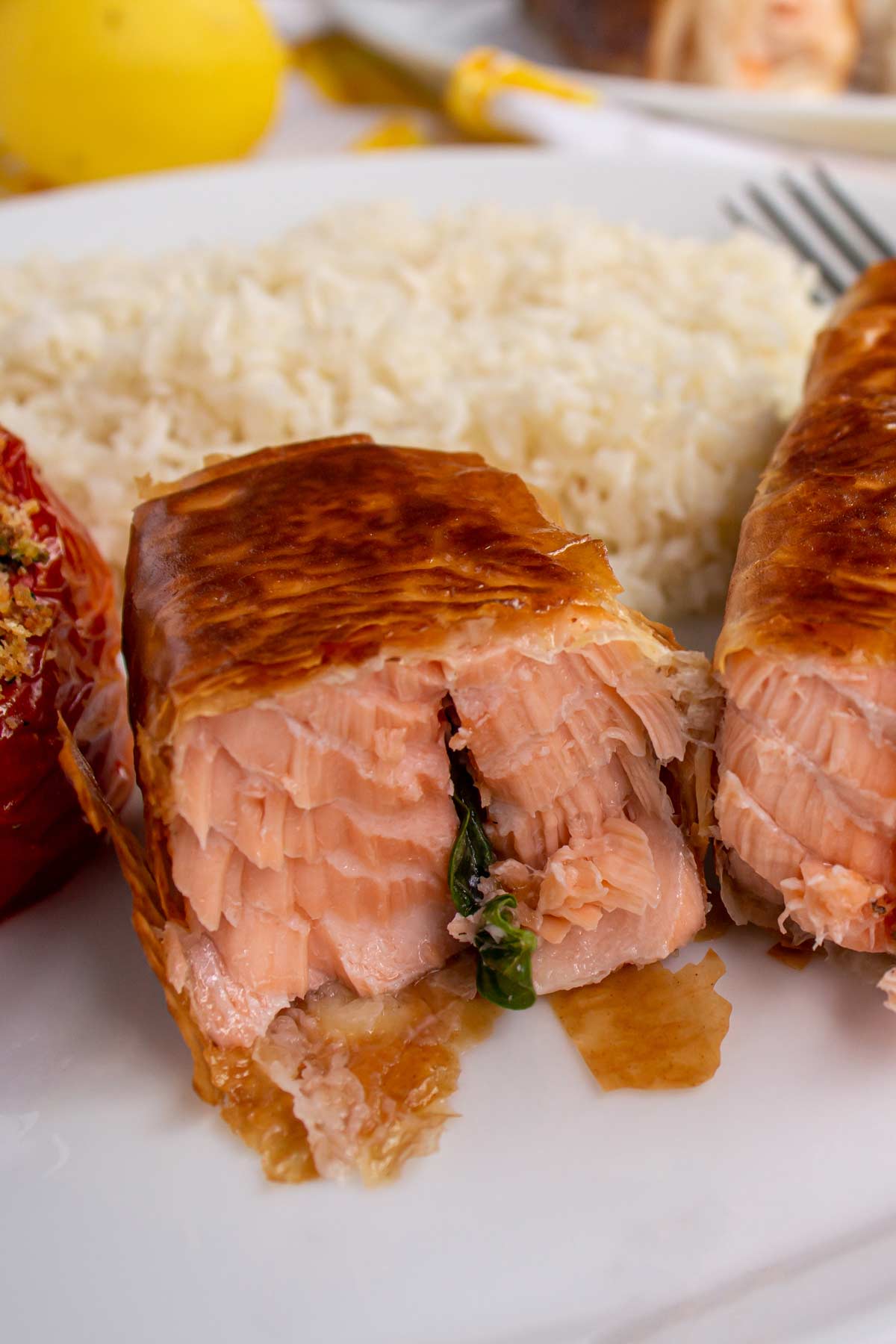
Expert tips
Be gentle when working with phyllo dough as it can tear easily. It can also quickly dry out so it is imperative to keep your phyllo covered with a cloth when not working with it.
I suggest planning ahead on what you would like to make with the remaining phyllo dough so you can make it the same day you make the salmon. A couple of my favorites are Armenian baklava (paklava) and sari burma (rolled baklava). I would not recommend thawing and then refreezing phyllo dough.
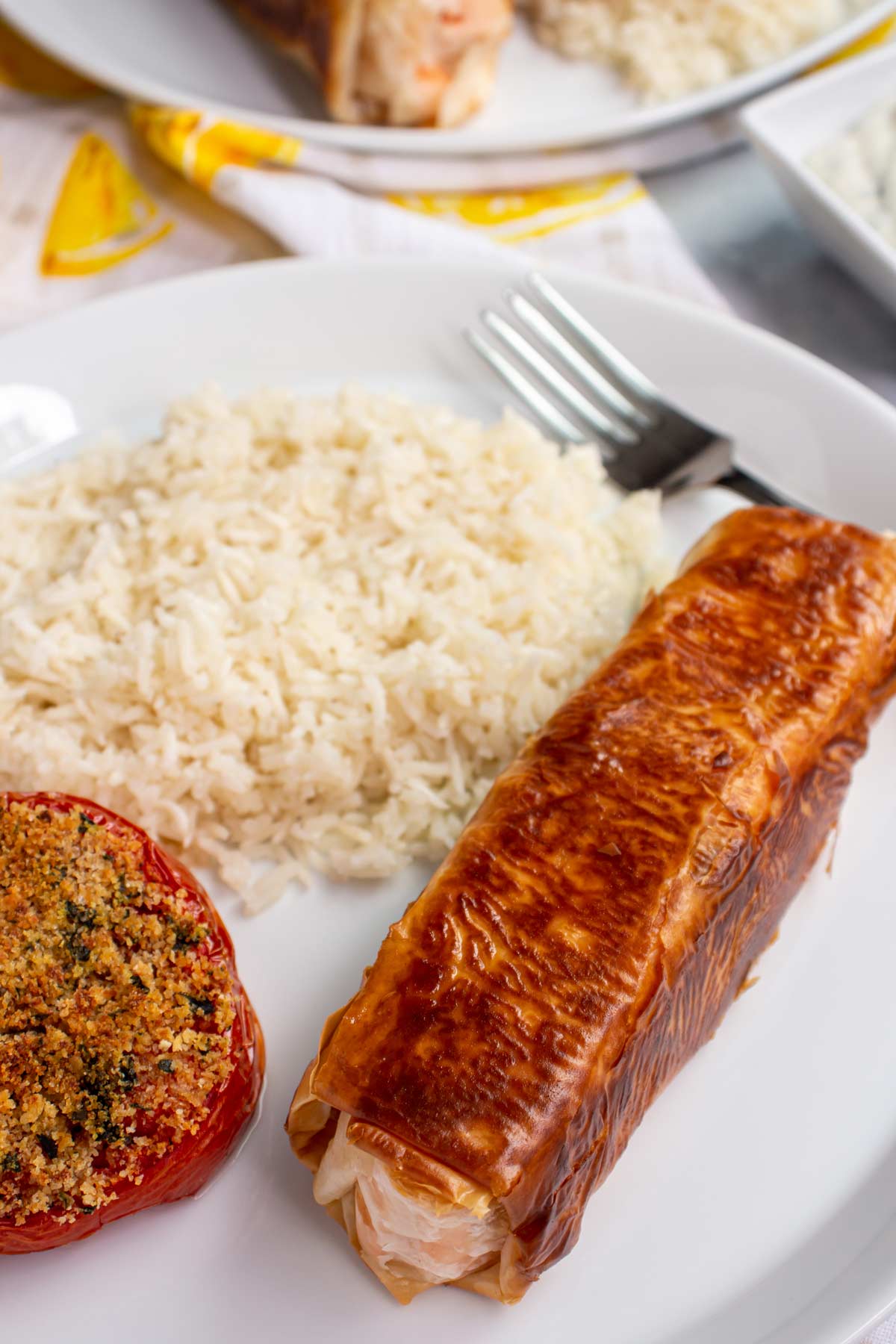
Other recipes you may like
- Le Bernardin's Salmon Rillettes Recipe
- Garlic Lemon Salmon Piccata
- Grilled Salmon with Quinoa Salad and Arugula Chimichurri
- Easy British Fish Pie
- Grilled Fish Tacos
- Spaghetti with Cod, Rapini, and Garlic
- Browse all Fish and Seafood Recipes
Tried this recipe? Please leave a star ⭐️⭐️⭐️⭐️⭐️ rating in the recipe card below and/or a review in the comments section further down the page. You can also follow me on social media on Facebook, Instagram, and Pinterest!
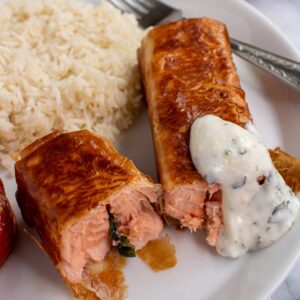
Wrapped Salmon in Phyllo with Lemon Horseradish Cream Sauce
Ingredients
- 8 (3-ounce) skinless, boneless salmon fillets (or one 1 ½ pound skinless boneless side of salmon, cut into 8 equal pieces)
- Kosher salt and freshly ground black pepper
- 8 to 12 fresh basil leaves, or as needed
- 3 tablespoons unsalted butter melted
- 4 sheets phyllo (filo) dough
- 1 ½ tablespoons canola or vegetable oil, or as needed
Lemon-Horseradish Cream:
- ½ cup sour cream
- 2 tablespoons prepared horseradish or horseradish sauce
- ½ teaspoon grated lemon zest
- 1 tablespoon fresh lemon juice
- Kosher salt and freshly ground black pepper
- 1 tablespoon finely chopped fresh basil or thinly sliced chives
Instructions
- Season the salmon fillets on all sides with salt and pepper. Lay basil leaves on top of 4 of the salmon fillets, and then place another salmon fillet on top of each basil-covered one to make a sandwich (flip-flop the fillets so the skinny side of one is against the fat side of the other fillet to create a more even thickness for cooking).
- Brush the top of 1 phyllo sheet with melted butter, fold the sheet in half (like a book), then brush the top with more butter. Place 1 salmon-basil fillet on 1 end of the phyllo dough and wrap neatly, folding the sides in like a burrito. Repeat with the remaining phyllo, butter, and salmon-basil fillets. Cover with a clean kitchen towel until ready to cook (to keep them from drying out).
- Meanwhile, make the sauce by combining the sour cream, horseradish, lemon zest and juice in a bowl. Season the horseradish cream with salt and pepper and stir in the basil or chives.
- Add the oil to a large nonstick sauté pan or skillet and heat the oil over medium heat. Add the phyllo-wrapped salmon fillets and cook for about 3 to 4 minutes on the first side, then using silicone-tipped tongs carefully flip and cook for about 2 minutes on each of the remaining 3 sides (the first side will usually take the longest to brown). The phyllo should be golden brown and an instant read thermometer inserted into the thickest part of the salmon should read 145°F. Serve the salmon fillets immediately with the horseradish cream.
Notes
- Be gentle when working with phyllo dough as it can tear easily. It can also quickly dry out so it is imperative to keep your phyllo covered with a cloth when not working with it.
- Since this recipe only uses 4 sheets of phyllo, I suggest planning ahead on what you would like to make with the remaining phyllo dough so you can make it the same day you make the salmon. I would not recommend thawing and then refreezing phyllo dough.
- To learn more about phyllo dough, check out my paklava post.
- Adapted from Avec Eric: A Culinary Journey with Eric Ripert
Nutrition
*All nutritional information is based on third-party calculations and should be considered estimates. Actual nutritional content will vary with brands used, measuring methods, portion sizes and more.*




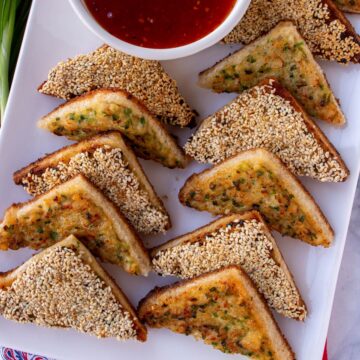
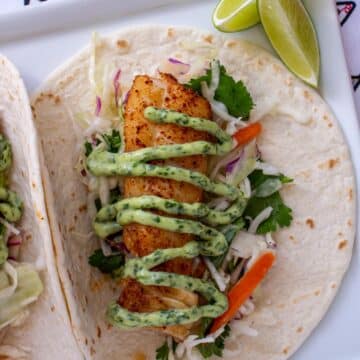
Comments
No Comments